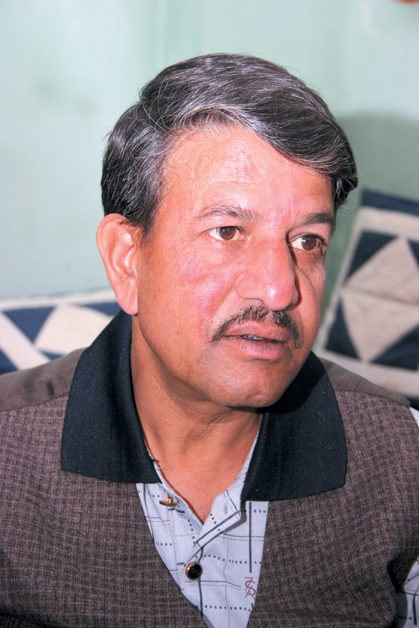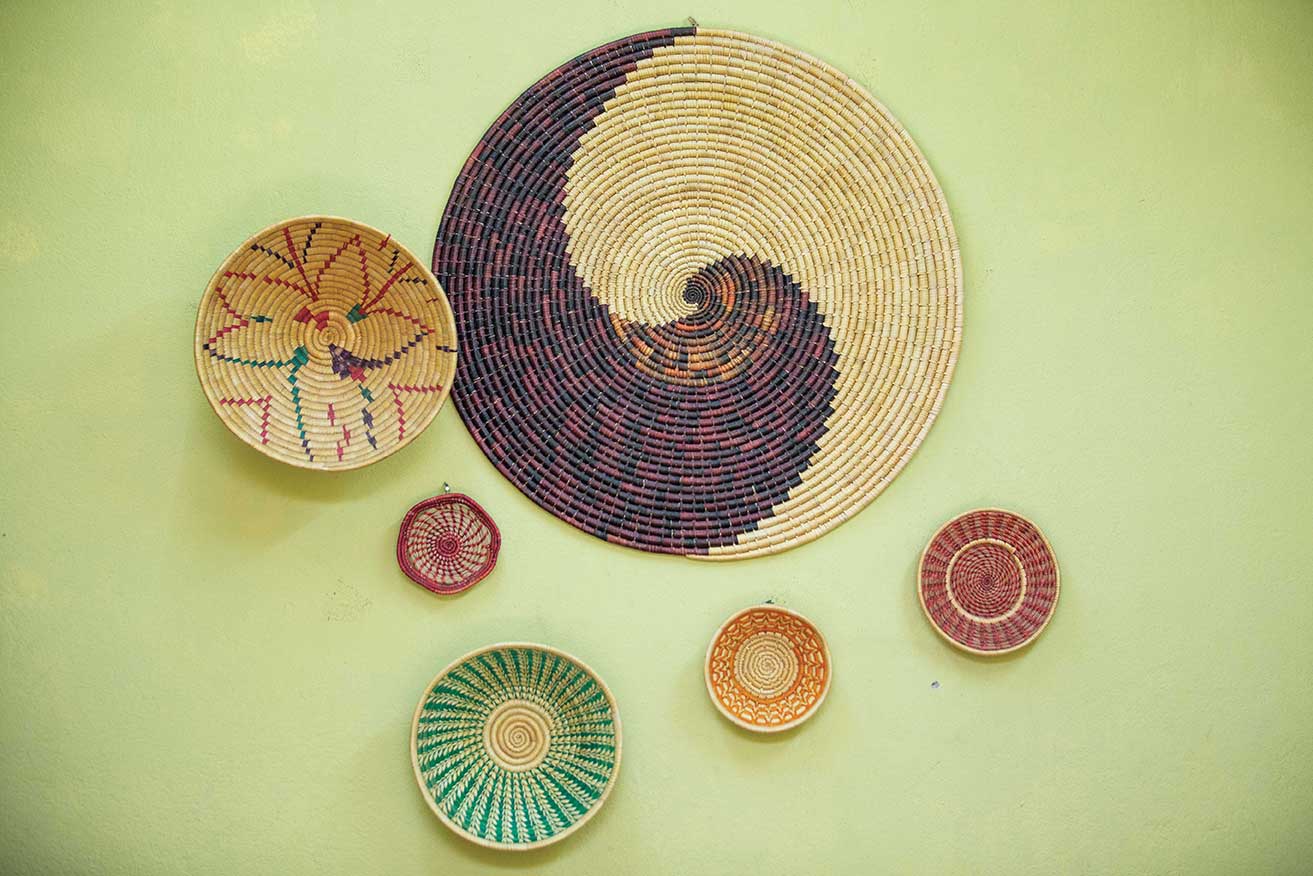Jaya Hari Jha is the founder of Nepal Numismatic Society. Born in 1955 in Lalitpur to Bishnu Lal Jha and Subhadra Jha, who were originally from Bhaktapur, he started his career working for the government at the Personal Record Keeping Office at Pulchowk in 1970.
 Jaya Hari Jha is the founder of Nepal Numismatic Society. Born in 1955 in Lalitpur, to Bishnu Lal Jha and Subhadra Jha, who were originally from Bhaktapur, he started his career working for the government at the Personal Record Keeping Office at Pulchowk in 1970. After completing 19 years of service at the same office, he was transferred to the Immigration Office in 1988 and subsequently to the Home Ministry in 1995. He resigned from office in 1996.
Jaya Hari Jha is the founder of Nepal Numismatic Society. Born in 1955 in Lalitpur, to Bishnu Lal Jha and Subhadra Jha, who were originally from Bhaktapur, he started his career working for the government at the Personal Record Keeping Office at Pulchowk in 1970. After completing 19 years of service at the same office, he was transferred to the Immigration Office in 1988 and subsequently to the Home Ministry in 1995. He resigned from office in 1996.
His involvement with the Nepal Philatelic Society began in 1981, and being an avid stamp collector he was a member of the Nepali Team that visited Singapore in 1995 for the World Philatelic Society Exhibition. He also traveled to India, Hong Kong and Thailand to exhibit his collections.
Jaya Hari Jha is also a member of the International Bank Note Society #9136 and is the author of the successful book “An Overview of Nepalese Paper Money”. The book is a well documented work that provides all necessary data and relevant facts with illustrations. It gives a comprehensive picture of Nepali paper notes of all denominations, thereby presenting their systematic phases of development and at times highlighting their distinct merit and identity. It has provided the World Paper Money Market with information and distinctive features of the Nepali monetary system. It is perhaps the only book that contains all documentary literature about the Nepali paper money.
How did you come up with “An Overview of Nepalese Paper Money”?
A German friend, Hans Wittmann who was in Nepal around 1985-86, had a deep interest in Nepali paper money. Both of us were avid collectors of stamps, but when he asked for my assistance to find literature on Nepali notes, I met a dead end. The plea itself was an eye opener to me and so I started my own research on the matter. Initially, I started collecting Notifications issued by Nepal Rastra Bank and I used to give one copy to Hans as his intention was to come up with a publication on the subject. My collection of Nepali bank notes and literature grew from there. During my research, I visited Nepal Rastra Bank and solicited information but found they did not have a methodical system of keeping records, and moreover I found out that some journals had wrong information. Then in 2001, an Indian friend suggested I should come up with some text on Nepali Bank Notes. Evaluating my research and collection of bank notes, I found it adequate for a publication in book form.
Tell us more . .
My English is not up to par so I talked to my son Bineet Jha, who with co-author Deepak Raj Pandey worked on the book both in Nepali and English. To come up with something original was challenging in terms of finance, but my wife Manjeeta came to our rescue and Subash Printing Press agreed to have it printed on credit. I just had to buy the paper. After publication in 2001, the book was released at the Patan Museum amidst an awesome response from the media. The book became popular and we sold around 1,500 copies, which enabled me to pay my debts.
What was the response from the international society?
An American publication "The Bank Note Reporter" reviewed my book and so did the International Bank Note Society, which has approximately 10,000 members from different countries. That helped me export 200 books. The Nepal section in the World Paper Money Catalogue was not up-to-date but the publication of my book helped them do so with accurate information in their 11th edition. An authority in bank notes, Giovanni Lorenzoli – IBNS #8235 wrote in his article “Nepali Artistic Buildings as seen on Nepali Notes” that my book is not just a catalogue but a book that gives interesting information and the wish to write more on Nepali notes. The importance speaks for itself.
.. and you give credit to Hans Wittmann?
Yes, he was the inspiration of my endeavor. Hans is no longer with us but I owe it to him. He completed his research and records on Nepali Bank Notes in 2002 and it was published in German. His limited edition is distributed around noted museums all over the world, including the British museum.
What are your valued collections or research collections?
Except for a couple, I have in my possession every Prefix Bank Notes of Nepal, which would total about 3,500 different notes of different denominations. The drawing together of the notes was a research in itself. Nepal Rastra Bank did not have a systematic record on the matter. When they issue bank notes, the name of the Governor and its serial number is notified to the public, but records of the replacement notes and its numbers are absent from its records. The publication of “An Overview of Nepalese Paper Money” has assisted them to some extent. My collection also comprises of various specimen banknotes of different governors chronologically from the reign of King Mahendra to the present King Gyanendra, and of course, currencies of about 200 countries. Together, they are my priceless collection.
Why collect Error Banknotes?
Error banknotes are confused with counterfeits. Forged banknotes are made with dishonest intentions, whereas errors are simply errors, made either by humans or technology. The technology used in printing banknotes is one of the most sophisticated and advanced. After comprehensive designing and printing, banknotes go through a rigorous screening and filtration process to weed out any error prints. But the sheer volume of the prints makes it almost impossible to check every single note for errors. Thus some error banknotes inadvertently come into circulation. Carelessness does not play a part as these are certainly not willful errors. For us, bank note collectors and researchers, they are of great interest to us not because of their value as currency, but for their priceless collection value.
Tell us about Nepal Numismatic Society and your exhibitions?
Numismatists in Nepal did not have a platform where people could come and interact, share information on their collections and learn about its preservation. After the release of “An Overview of Nepalese Paper Money”, the importance of having such a platform was felt. Invitations to interested individuals was sent out, and with Sagar Man Shrestha – a businessman from Birgunj, we jointly registered Nepal Numismatic Society at the Central Department Office, and since then membership has gone up to 130 members. Our office is at Tripureshor and we meet every Thursday.
I have exhibited my collection more than six times with my collection of different series of Banknotes. To mention a few, I exhibited my series of Prefix collection and Vertical collection of Nepali notes on the Golden Jubilee of the Chamber of Commerce. I displayed my Error notes, Interesting Note Numbers or Fancy numbers called by numismatics i.e. all 000001,and Substitutes to bank notes i.e. Postal Order, Demand Draft, Credit Cards etc during the Nepal Money Expo in 2005. I hope to do more of the same in the future.
What are your aspirations for the future?
My wish is to have my collection displayed in a museum. There are Banker Clubs in Nepal and their assistance on the matter would be appreciated.











